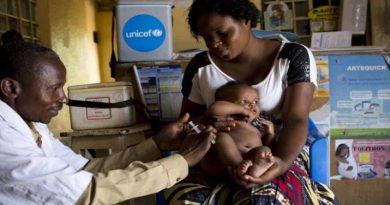Smartphone owners now exceed 4.3 billion persons globally
According to the GSMA’s annual State of Mobile Internet Connectivity Report 2023 (SOMIC), more over half (54%) of the world’s population, or roughly 4.3 billion people, currently own smartphones.
Mobile internet services are significantly more likely to be known about and used by smartphone owners, who also tend to use them more frequently and for a larger range of tasks. For instance, about 4 billion of the 4.6 billion individuals who use mobile internet today—or 49% of the world’s population—do so while using a smartphone. Meanwhile, 600 million individuals, or 8% of the world’s population, use feature phones to access the internet.
The SOMIC 2023 research separates mobile internet connections by device type for the first time, highlighting notable regional variances. Over two-thirds (69%) of smartphone owners who access mobile broadband do so on a 4G-enabled device, while 17% do so on a 5G-enabled device, thanks to the global rollout of 4G and 5G networks, which has been largely driven by mature markets like North America and East Asia & Pacific. However, only 3G is still supported by 69% of smartphones used to access mobile internet in Sub-Saharan Africa and 33% in the Middle East and North Africa, indicating that 2G and 3G networks continue to be a significant source of coverage for millions of users in LMICs.
The sixth annual SOMIC report from the GSMA, released in advance of MWC Kigali 2023, examines the most recent developments in global connectivity since 2015, offers details on mobile internet usage and adoption barriers in LMICs, and identifies the major obstacles that must be overcome to ensure that everyone can access the internet.
Focus on the digital divide and the usage disparity
While 57% of the world’s population now uses mobile internet, there are still 3.4 billion individuals who are not connected. The majority of people without mobile internet access reside in locations with access to a mobile broadband network; this is known as the use gap.
This usage gap, which represents 3 billion people and has decreased marginally from 40% of the world’s population in 2021 to 38% in 2022, is still very large. Only 5% of people who don’t use mobile internet, or those who reside in places without mobile broadband connectivity, do so.
Regional disparities and a digital divide still exist; for instance, South Asia and Sub-Saharan Africa have the least connected populations overall, with use gaps of 59% and 52%, respectively. In LMICs, adults in rural regions continue to use mobile internet at a rate that is 29% lower than that of people in urban areas, and women use mobile internet at a rate that is 19% lower than that of men.
The survey also finds that two-thirds of people who reside in places with access to mobile broadband but do not use mobile internet do not own a mobile phone, underscoring the significance of addressing issues like handset affordability. Even though many individuals own cellphones, many of them are still unable to use them because of obstacles such a lack of digital literacy and skills, safety and security worries, difficulty accessing enablers or services, and a lack of pertinent material in local languages.
Users who own or have access to a smartphone (350 million) or a basic or feature phone (600 million) but only utilize basic services like voice or SMS make up the remaining third of the usage gap, or 950 million individuals. Given that they already own a device, smartphone owners should, in theory, encounter less difficulties in accessing the internet. However, this is frequently the main difficulty in utilizing the internet.
Additional significant findings
- • Although 200 million individuals started using mobile internet in 2022, the adoption rate has slowed in recent months, dropping from 300 million in 2021 and 2020.
- • Only 25% of people in the least developed nations of the globe utilize mobile internet, compared to 52% in LMICs and 85% in high-income nations.
- • Mobile broadband coverage has mostly remained the same, with 95% of the world’s population now living inside a mobile broadband network’s coverage area.
- • Nearly 400 million people, or 5% of the world’s population, still lack access to mobile broadband.
- • The percentage of people who are not linked varies greatly within and within regions and nations, with 95% of them residing in LMICs.
Removing obstacles to make sure everyone is linked
The availability of mobile internet access has a major beneficial social and economic impact on GDP, household consumption, and individual well-being.
In recent years, initiatives have been made to close the usage gap while pursuing digital inclusion and recognizing the potential of the technology to revolutionize societies. Although there have been major successes and mobile internet use is still growing, the SOMIC report reveals that the pace of development is behind and that more work is needed to guarantee that everyone can access mobile internet.
In order to do this, the GSMA is urging increased cooperation among all stakeholders, including the government, policymakers, and the mobile ecosystem, in order to eliminate the digital divide, offer coverage to people who live in places without mobile broadband, and remove usage obstacles. Understanding the usage gap, the requirements of those who have not yet adopted mobile internet, the obstacles they experience, and the potential to overcome them must guide actions.
“Mobile is the primary – and, in many cases, the only – way that the majority of people in low- and middle-income countries access the internet,” said Mats Granryd, Director General of the GSMA. It is concerning that the rate of growth in the use of mobile internet has slowed. Millions of individuals will be denied access to essential services and chances for income generation due to a lack of connectivity, with poorer, less educated, rural, and female users being disproportionately affected. Accelerating digital inclusion and removing barriers are urgently needed in order to prevent the digital divide from growing further as a result of the ongoing cost of living crises and rise in climate-related calamities.




